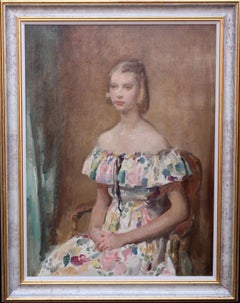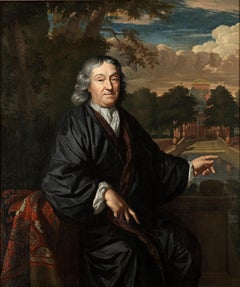Walter Ernest Webster Art
Walter Ernest Webster was a British figure and portrait painter. He also worked as an illustrator. Webster won a scholarship to study at the National Art Training Schools which was renamed the Royal College of Art before attending the Royal Academy Schools from 24 January 1899 to 1904. Webster was a good student and won scholarships and prizes. By the age of 23, he was living in Putney, London with his mother Mary and his elder sister Gertrude Mary, a shorthand-typist. He enlisted for service in the Fourth Battalion of the Essex Regiment on 14 February 1916. Webster married Susan Beatrice Pearse, an artist and a book illustrator, at Fulham in December 1919. By 1939, he was living with his wife and sister Gertrude Broome Villa, 27 Broomhouse Road, near Parsons Green. Webster lived at that address until he died on 30 April 1959, leaving £6,158 17s 9d to his widow Susan and his sister Gertrude. Having once attended the Royal Academy Schools, Webster started exhibiting works at the Royal Academy and continued to exhibit there almost every year until his death in May 1959. He also exhibited at the Royal Institute of Oil Painters, Royal Institute of Painters in Water Colours, Royal Glasgow Institute and the Paris Salon. He was awarded bronze and silver medals in Paris before WW1 and a gold medal there in 1931. Webster produced illustrations for the front covers of several publications including Ladies' Home Journal and Etude. Many of these reflected the Art Deco style of the period. Webster's work can be seen in many public collections in the UK including The Walker Art Gallery, Gallery Oldham, Paisley Museum and Art Galleries, McLean Museum and Art Gallery, Wellcome Collection and the Government Art Collection. The last of these holds Webster's portrait of Her Majesty Queen Elizabeth II. Webster had earlier painted a watercolor of the young Princess Elizabeth.
Early 20th Century Walter Ernest Webster Art
Oil, Canvas
1930s Impressionist Walter Ernest Webster Art
Oil
1920s Impressionist Walter Ernest Webster Art
Oil
1920s Impressionist Walter Ernest Webster Art
Oil
1680s Old Masters Walter Ernest Webster Art
Canvas, Oil
1980s Impressionist Walter Ernest Webster Art
Canvas, Oil, Cardboard
17th Century Baroque Walter Ernest Webster Art
Oil, Canvas
1940s Impressionist Walter Ernest Webster Art
Canvas, Oil
Late 18th Century Walter Ernest Webster Art
Canvas, Oil
Early 20th Century Impressionist Walter Ernest Webster Art
Canvas, Oil
Venice Landscape Italian Oil on Canvas Painting in Gilt Wood Frame, Belle Epoque, Early 20th Century
17th Century Old Masters Walter Ernest Webster Art
Canvas, Oil
18th Century and Earlier Walter Ernest Webster Art
Canvas, Oil
18th Century and Earlier Baroque Walter Ernest Webster Art
Canvas, Oil
1820s Old Masters Walter Ernest Webster Art
Oil, Canvas
18th Century Walter Ernest Webster Art
Canvas, Oil
17th Century Baroque Walter Ernest Webster Art
Oil, Canvas




